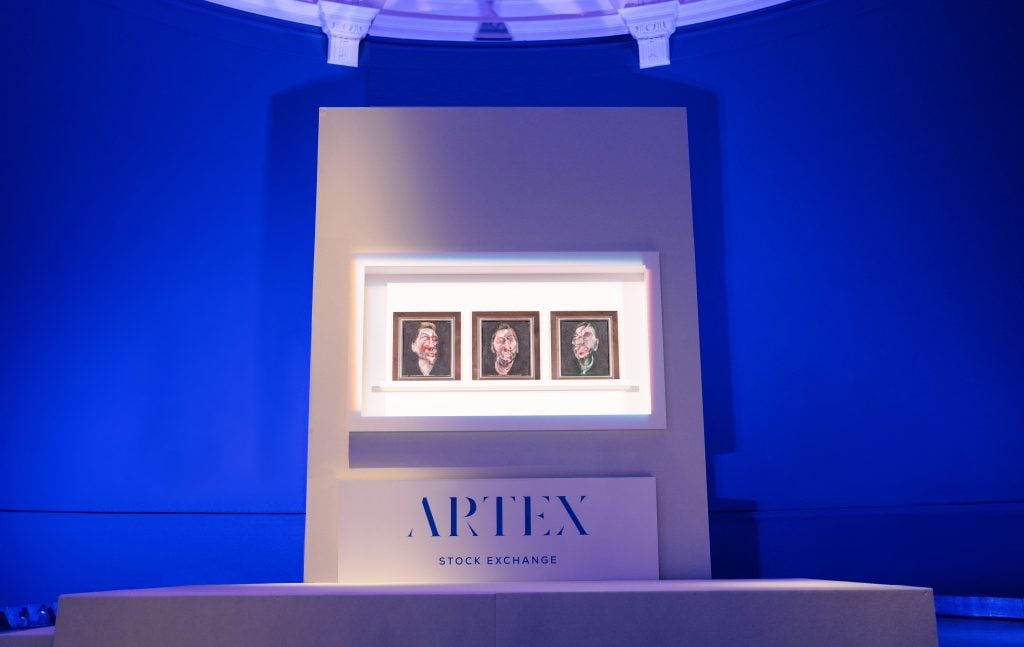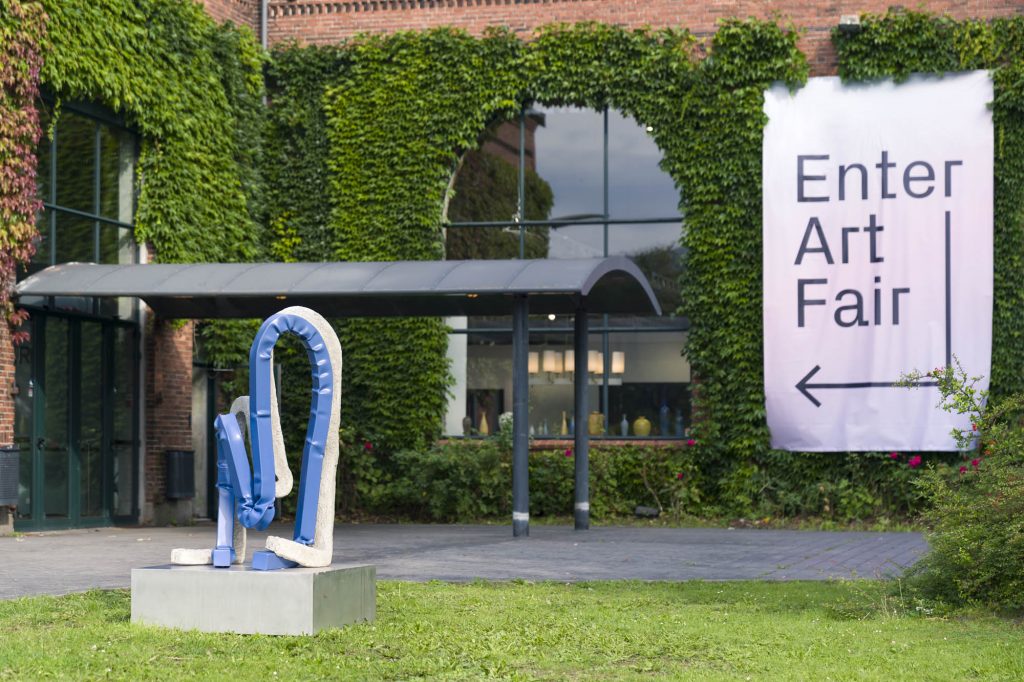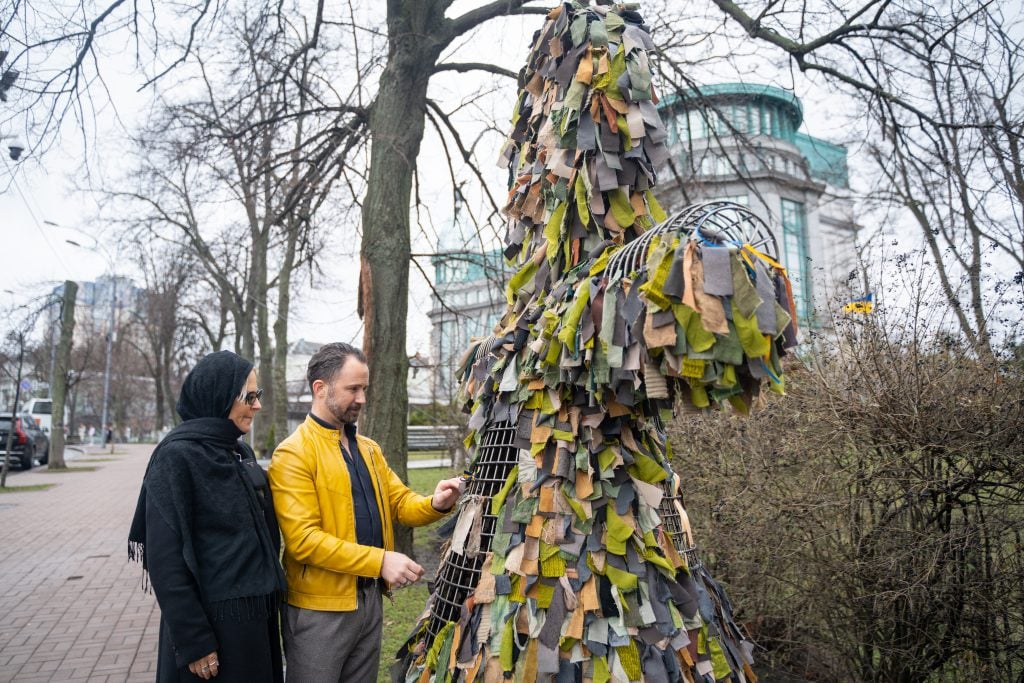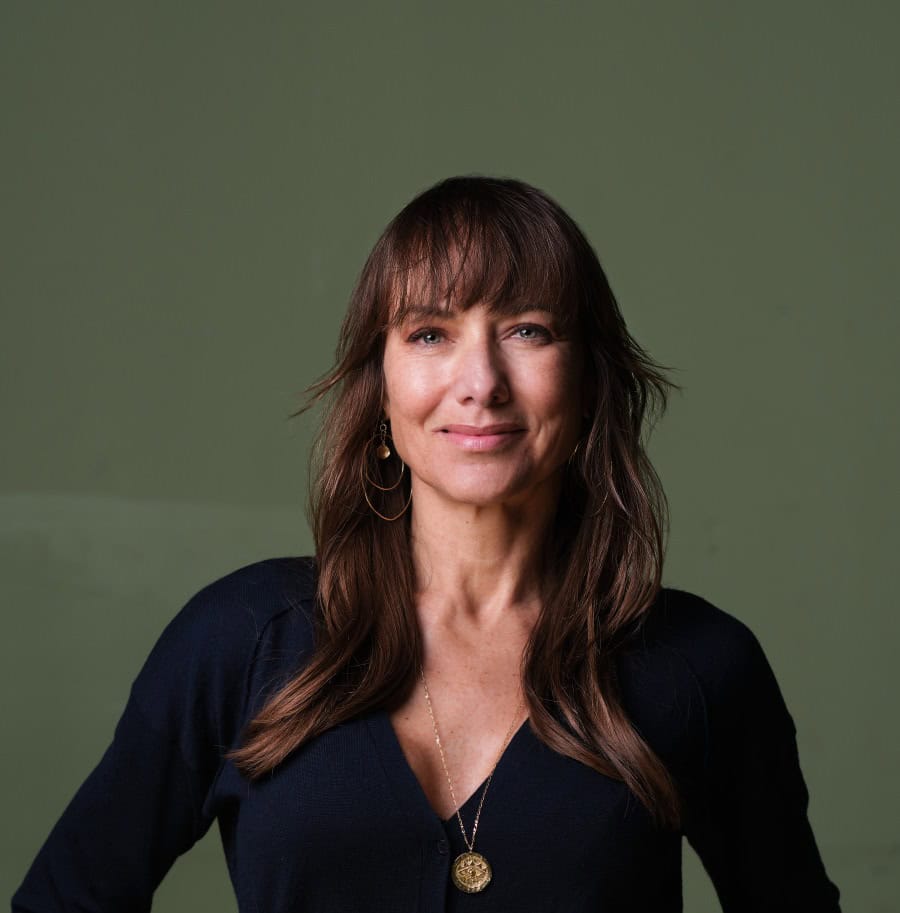“Every new generation of artists has new ideas and approaches that are pushing the media forward”
Interview with Kell Johan Frimor, co-founder and director of Printer’s Proof
As the only print studio participating at Code Art Fair, Printer’s Proof stands out with its representation of four strong Scandinavian artists exploring the classical techniques of printmaking, while bringing a sense of freshness to the old media. For this year’s Code visitors, Copenhagen-based Printer’s Proof offers a chance to get close to a new generation of artists who are pushing printmaking forward. We met Kell Johan Frimor, the co-founder and director of Printer’s Proof, for a talk about his journey within the field of printmaking, leading him from Copenhagen and Florence to Israel and Sweden. Today, he is back in Copenhagen, working hard to spread the understanding and the connoisseurship for the media. Next stop on the journey is Code Art Fair 2018.
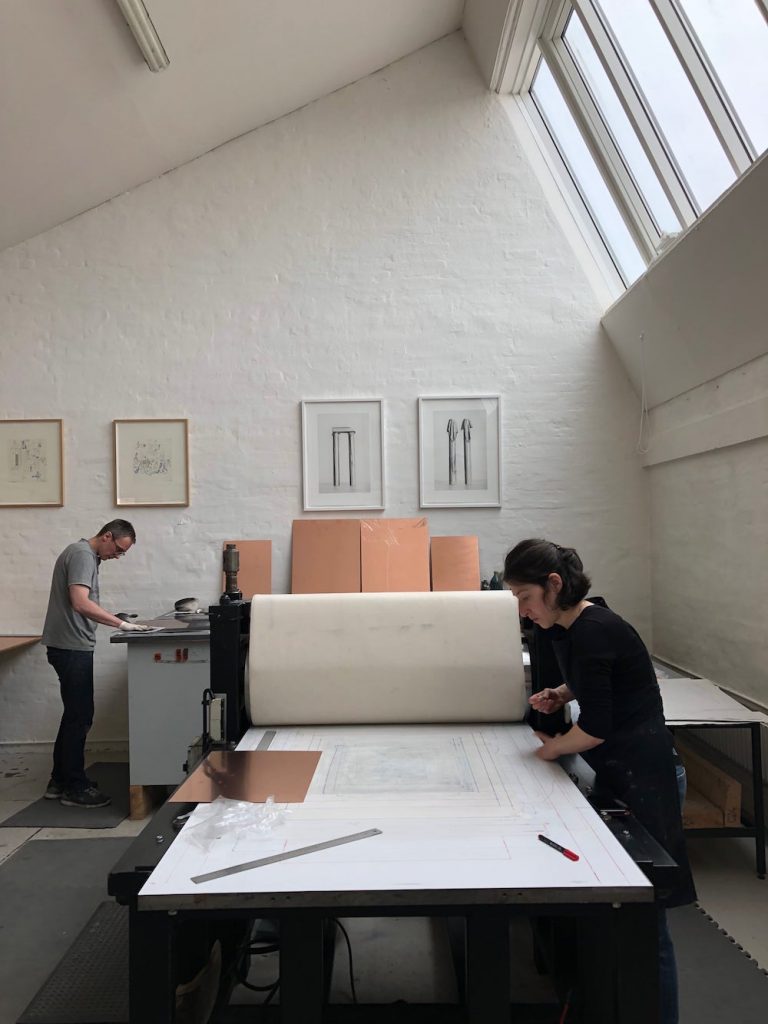
Printer’s Proof was established in 2014. When did you first become aware that you had a special affinity for printmaking and what eventually led you to open a print studio?
I have always had a special interest in drawing. It has this immediacy and intimacy that is very much different from other medias. It was drawing that allowed me to discover graphics and the work of great masters like Goya, Rembrandt and Morandi that were capable of communicating very powerful imagery with very simple means as both Rembrandt and Morandi build their compositions solely from the use of lines while Goya in addition also used tonal etching called aquatint.
Before starting my studies in Florence, to become an intaglio printmaker, I was working as an assistant to the Danish artist Jørgen Boberg. In his younger years, Boberg was a very prolific printmaker who had a years-long collaboration with the Austrian Master Printer Kurt Zein. Jørgen told me a lot of stories about Zein and the time at his studio and we spent many hours discussing graphic art together. He encouraged me to take printmaking seriously and even suggested that I should become a professional printer.

After completing my studies in Florence I returned to Denmark and following Jørgen’s suggestion applied for a position at the studio of Niels Borch Jensen. I was very lucky to be accepted and fortunate to work along the side of Mette Ulstrup and Julie Dam who are among the best edition printers in the world. My stay at Niels Borch Jensen Editions opened my eyes for professional studio practice and for the world of contemporary publishing. It was a period in which I was constantly looking for new challenges and that is why I decided to leave Niels Borch Jensen Editions and take a position at Har-El Printers & Publishers in Israel where I was in charge of several intaglio projects. Working directly with the artists was a new experience for me, it taught me a lot and gave me confidence.
When I returned to Scandinavia, I worked for Atelje Larsen in Helsingborg, an internationally renowned intaglio studio. Working in Sweden, I discovered that I wanted to have my own take on printmaking but it took some time before it was made possible. After joining forces with my wife, art historian, Olga Zolin, we were finally able to open Printer’s Proof in 2014.
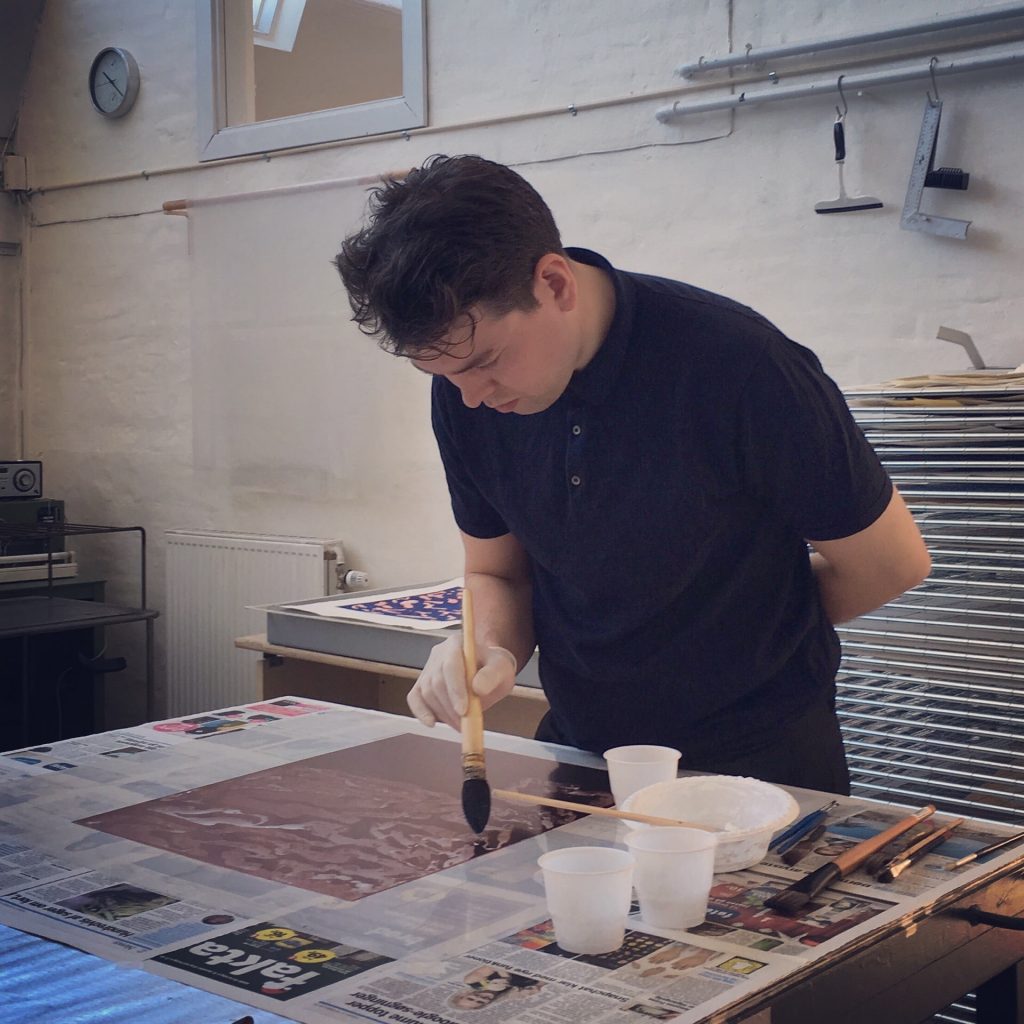
Your program focuses particularly on “old school” intaglio print studios. Can you give us some insights into this discipline?
When I say ’Old School Intaglio Studio’ I mean that we use the same printmaking principles that were also used around 500 years ago. It is the good old-fashioned hands-on process both for us as printers where everything is made manually and for the artists who work directly on the copper plates. When I say old fashioned it isn’t the same as there has been no innovation within the media the last five hundred years. On the contrary, new methods are being developed all the time like the photographic techniques photo-etching and more recently also photogravure.
There has also been a lot of development in the tonal-techniques that weren’t there back in Rembrandt’s time. Every new generation of artists has new ideas and approaches that are pushing the media forward. What amazes me is to see how artists can reinvent the techniques to his or hers own need bringing a new sense of freshness to a centuries old media. What is still in line with the tradition though is that all the steps in the processes take time to complete and printing a project can take weeks at a time. The reason we hold to the tradition is that the end result is so much more rich and tactile in tonal qualities than in any other printed media. There is no machine that could ever achieve the same result as a skilled printer.
A copper plate can be wiped in many different ways, which has a direct impact on the artistic end-result. Just to give a few examples. When printing manually you can include more colours on the same plate or you can hold more or less plate tone and you can make the image appear either hard or soft depending on what the artist wants. The great strength in copper printing is the possibility for the artist to fine tune things until the very last proof print.

In your view, what are the core elements of a strong print?
A strong print is an artwork that allows the spectator to come as close to the artist as one can because it is like a fingerprint. It is stripped naked for all artificial devices communicating only with the necessary means and nothing more than that. Great prints are often a mix of something refined and unpolished at one and the same time. Intaglio offers endless possibilities and tools, so it is easy for the artists sometimes to get overwhelmed by the infinity of possibilities, which again can lead to the temptation of over-working an image. A strong print will retain the immediacy and freshness for decades and even centuries.

How do you see the current scene of printmaking and how would you like to make a mark on the world of printmaking?
There is a lot of interest for intaglio printmaking outside of Denmark. Especially in our neighbouring countries Sweden, Germany and United Kingdom there is a much greater tradition and appreciation for art on paper, but the real driving force in contemporary art is to be found in the United States where the big American print studios have been dominating the commercial art world for decades. Having said that, I must say that Danish printers and publishers have been doing a lot to contribute to the appreciation of the graphic media around the world placing Denmark on the world map for their achievements. We are still a very young studio but in the four years of our existence we published projects that both the public and the art establishment have shown regard for. We continue to work hard on new projects trying to spread the understanding and the connoisseurship for the media.

This year, you will be participating in Code Art Fair for the third time, presenting a booth with the four artists Nicolai Howalt, Morten Buch, Julie Sass, and Birk Bjørlo. What can the visitors expect from your exhibition?
We are presenting four strong Scandinavian artists who were given the freedom to experiment within the media. The result is four interesting projects where the artists show the essence of their artistic practice in a format that explores the two classical techniques deep and high print adapting a contemporary approach. It is not classic line etchings, engravings or dry points but elaborate painterly in some of the cases and photographic in the other compositions that reflect the most resent area of research for those artists.
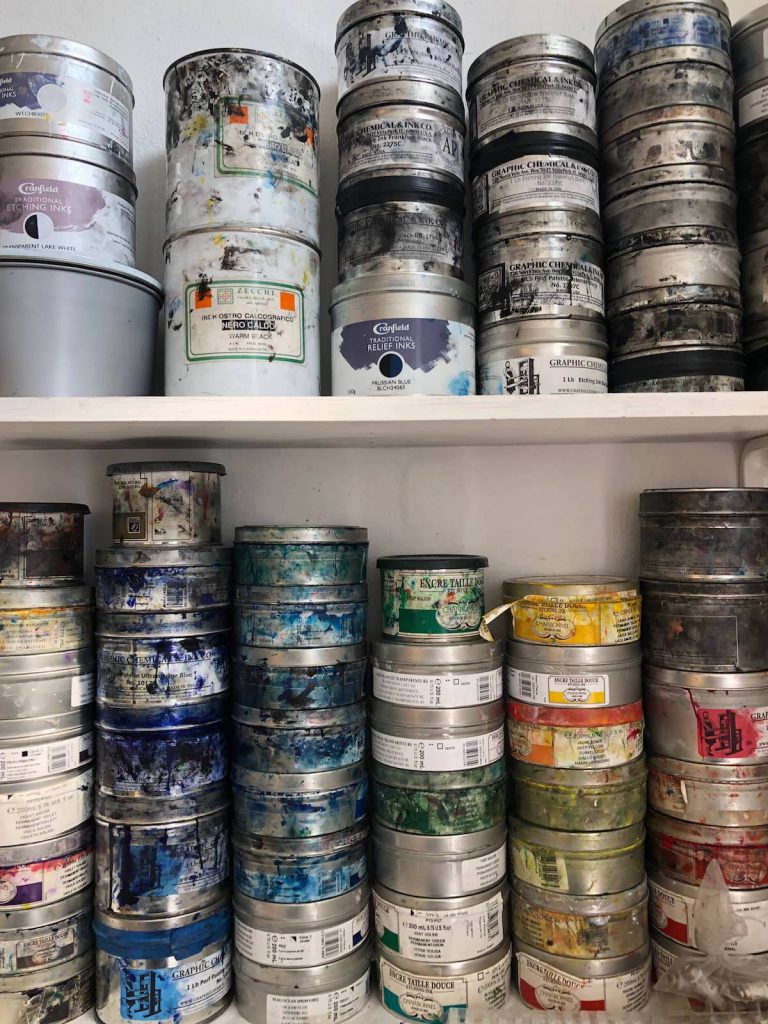
Can you elaborate a bit on the interplay between the artists? How do their artistic practices complement each other?
It is interesting to think that we are presenting four artists that are very much different from each other, three painters and a photographer. Nicolai Howalt experiments with the presentation trying to take distance to the way most people would expect to see his work by turning it into an object. Intuitively I think that the three painters attempted a move in the same direction especially since both intaglio and woodcut allowed Morten Buch, Julie Sass and Birk Bjørlo to work with tactility. With Julie Sass it is the embossing and the cut edges that try to break free from the two-dimensional support. In Morten Buch’s case it is the format and the rich tactility that renders his shapes almost in 3D and with Birk Bjørlo it is the work in layers where he plays with the spectator’s perception of what is foreground and background that builds a sense of volume.

What are the most challenging and rewarding aspects of participating in a fair and how do you see your role as a print studio (the only one at Code) compared to that of a traditional gallery?
Compared to a traditional gallery, we as a publishing print studio bring works to Code Art Fair that are a result of a long process of collaboration between our studio and the artists. The works we present were produced for the art fair, so in that sense the art fair for us is a public stage where those artworks will be presented. We take advantage of the democratic principle intrinsic to the printmaking media where projects are almost always published in an edition and allow the artist to be both of appeal for those that take interest in their practice but can’t afford to buy their unique works and for those that already collect those artists but wish to collect more in depth.
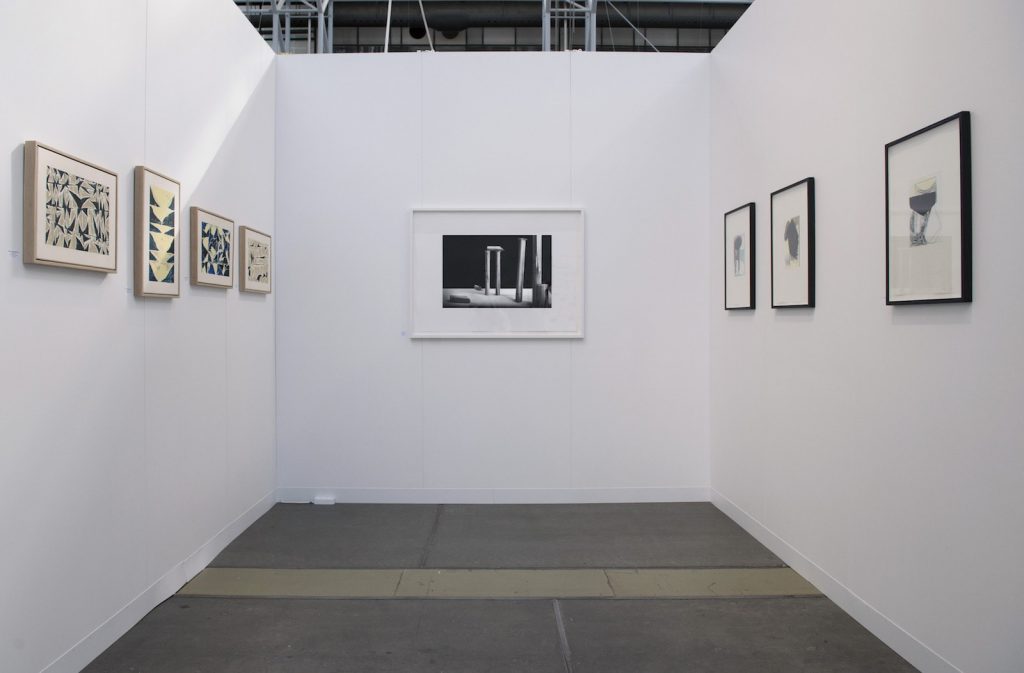
Art fairs have been sprouting across the globe the past decade causing the industry to talk about a global fair fatigue. How important is the art fairs for you as a print studio?
As a young publishing print studio, participation at art fairs is very important as we are still in the stage where we are working on building a brand and a name for ourselves within the art world. The encounter with colleagues is very important just as much as showing our work to an audience that takes interest in art.
What are you personally looking forward to at this year’s Code Art Fair?
Code Art Fair brings both strong international and Danish galleries and artists to Copenhagen and for us, just as for the rest of the audience that attends the art fair, it is exiting to see new presentations and works by artists whose careers we follow and whose work we admire.
